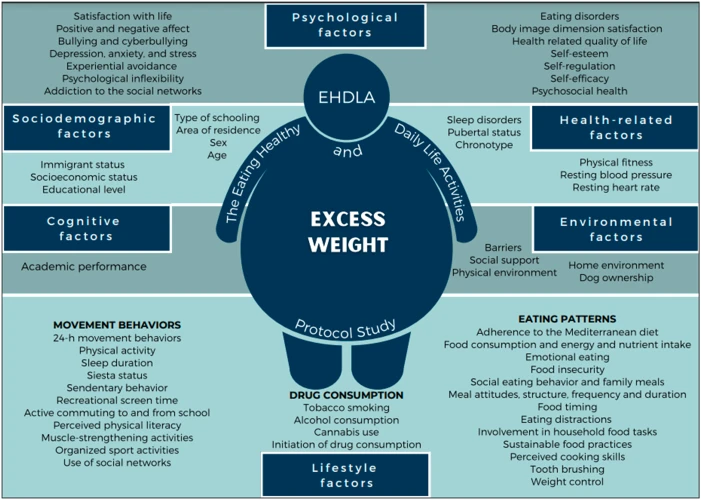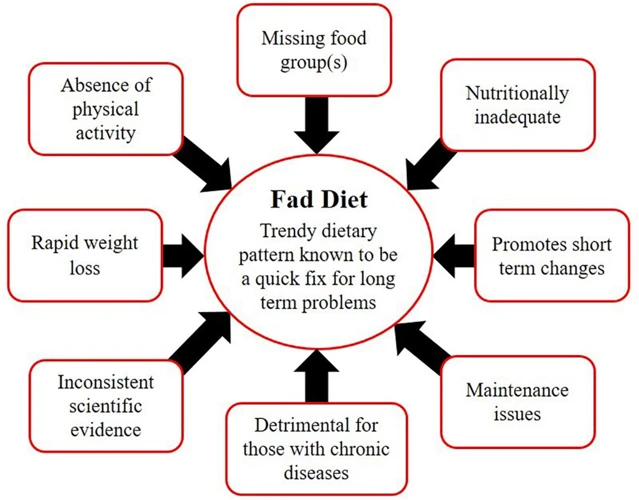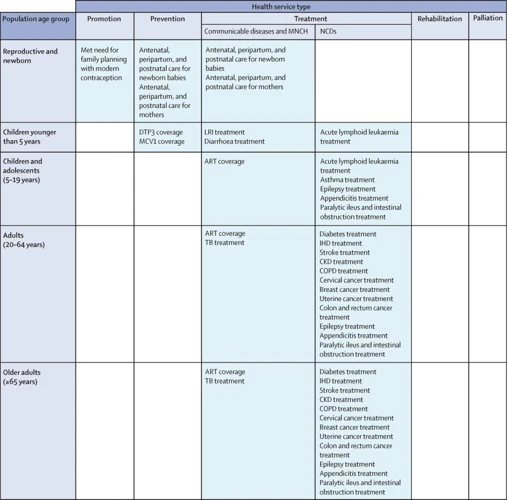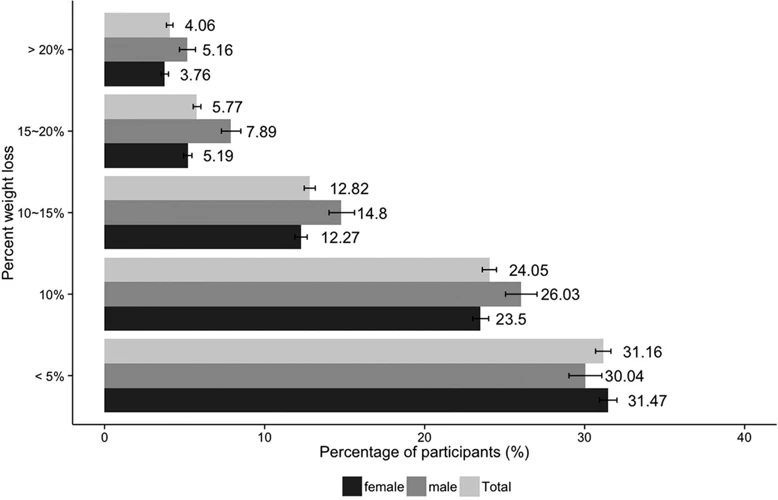Introduction

Embarking on a weight loss journey can be daunting, but keeping a food diary is an essential tool to make the process much easier. By recording everything that you eat and drink, you gain insight into your eating habits and can make informed decisions about what to change in your diet. In this article, we will go through the necessary steps to interpret your food diary accurately and adjust your weight loss plan accordingly. By following these steps, you’ll be well on your way to achieving your weight loss goals.
Why Keeping a Food Diary is Essential for Weight Loss
Maintaining a food diary is crucial for people who are looking to lose weight. Here are some reasons why:
- Increased awareness of food choices: Writing down everything you eat and drink increases your mindfulness and helps keep you aware of your food choices. You are more likely to make better food choices when you are aware of what you are eating.
- Better understanding of portion sizes: Keeping track of the portion sizes in your food diary helps you recognize how much you are truly eating. Many people underestimate the amount of food they consume, so writing it down can help you see the reality of your eating habits.
- Identifying trigger foods: By writing down everything you eat, you can identify patterns and trigger foods that make it harder for you to stick to your weight loss plan. For example, you may notice that sugary snacks make you crave more unhealthy foods throughout the day, which can sabotage your weight loss goals.
- Better accountability: By keeping a food diary, you are accountable to yourself for your food choices. It can be helpful to see a record of what you have eaten over the course of the day or week to give you a better understanding of your overall eating habits.
- Realistic goal setting: Keeping track of your food intake can help you set realistic goals when it comes to weight loss. If you have a clear understanding of how much you are eating, you can set appropriate calorie goals and adjust your diet accordingly.
Keeping a food diary is an effective tool for weight loss, helping you to stay mindful, recognize patterns in your eating habits, and make positive changes to your diet and lifestyle.
Step 1: Read your Food Diary

Now that you have diligently recorded all your food intake in your food diary, it’s time to review and analyze the data. The key to using your food diary effectively is to read it with a critical eye and look for patterns and insights that can help you adjust your weight loss plan. In this section, we will guide you through step one of interpreting your food diary data, where you can identify problematic food patterns and take note of portion sizes and nutrient intake. So, grab your food diary and let’s get started.
Identify Food Patterns and Trigger Foods
One of the most important steps in interpreting your food diary data is identifying food patterns and trigger foods. This can be achieved by carefully analyzing your meal entries over an extended period of time. Here are some tips on how to do it:
- Look for consistent meal choices: Review your food diary for meals that you consistently eat. Identifying these patterns can help you plan and make healthier choices.
- Identify your trigger foods: Pay attention to meals where you may have overindulged or snacked more than usual. These could be your trigger foods that cause you to lose control and indulge in unhealthy eating habits.
- Observe your eating habits: Look out for certain times of the day when you tend to snack or eat more than you should. This could be a sign of emotional eating or stress-induced hunger.
- Analyze your portion sizes: Take note of how much you are eating. Portion control is crucial to weight loss and it’s vital to understand whether you’re eating too much or too little.
- Compare your nutrient intake: Ensure that you’re consuming enough nutrients and avoiding high-fat or sugary foods. Analyzing the macros (proteins, fats, and carbs) present in your diet may help in determining if you need to adjust your meal plan.
Identifying food patterns and trigger foods is an essential part of interpreting your food diary data. By understanding the foods that lead to overeating or unhealthy eating habits, you can make informed decisions to modify your meal plan and make healthier choices. By following these simple tips, you’ll be one step closer to achieving your weight loss goals.
Take Note of Portion Sizes and Nutrient Intake
It’s not just about what foods you eat, but how much of those foods you consume that can have an impact on your weight loss goals. That’s why keeping track of the portion sizes of the different foods you eat is an essential part of maintaining an accurate food diary.
To make it easier, consider using measuring cups or a food scale to help you determine the exact amount of food you’re eating. You can then log this information in your food diary to help you better understand your eating habits.
In addition to portion sizes, it’s important to also take note of your nutrient intake. This means paying attention to the amount of carbohydrates, protein, fats, and other important vitamins and minerals that you’re consuming throughout the day.
One easy way to keep track of this information is by creating a table in your food diary that details the different macronutrient values of the food you’re eating. This way, you can ensure that you’re staying within your recommended daily allowances, which can differ depending on your specific weight loss goals and dietary needs.
By monitoring your portion sizes and nutrient intake, you can gain a better understanding of how your diet is affecting your weight loss progress. It can also help you identify areas where you may need to make adjustments or seek guidance from a nutritionist or dietitian.
Step 2: Analyze your Progress

Now that you have a good amount of data in your food diary, it’s important to use it to analyze your progress. By examining your eating patterns and weight loss results, you can make informed decisions about how to adjust your weight loss plan and stay on track towards reaching your goals. This step is crucial for anyone serious about losing weight efficiently and maintaining a healthy lifestyle. Let’s take a closer look at how to interpret your food diary data and use it to analyze your progress.
Look for Trends in Your Food Diary Data
As you analyze your food diary data, it’s important to look for trends that can help guide your weight loss plan. One way to do this is to create a chart or table to track your daily calorie intake and weight over time. This can help you see patterns that may be impacting your progress.
For example, you may notice that on days when you eat a large breakfast, you tend to consume more calories throughout the day. Alternatively, you may see that on days when you exercise more, you tend to lose more weight. By identifying these trends, you can make changes to your eating and exercise habits to optimize your weight loss plan.
Using an HTML table can be helpful for recording and analyzing your food diary data. Here’s an example table:
| Date | Calories Consumed | Weight |
|---|---|---|
| Monday, 3/1/21 | 1800 | 150 lbs |
| Tuesday, 3/2/21 | 2200 | 151 lbs |
| Wednesday, 3/3/21 | 1400 | 149 lbs |
This table includes columns for the date, calories consumed, and weight. Recording this information regularly can help you assess your progress and identify trends. For example, you may notice that on days when you consume fewer than 1500 calories, you tend to lose weight.
Keeping track of these trends can inform the adjustments you make to your weight loss plan. By examining your food diary data and using tools like charts and tables, you can make informed decisions about how to optimize your weight loss plan and reach your goals.
Assess Your Weight Loss Progress and Adjust Accordingly
Now that you have a better understanding of your food diary, it’s time to assess your weight loss progress and make adjustments accordingly. Follow these steps to effectively assess your progress:
- Weigh yourself regularly: Keep track of your weight at regular intervals. Weekly weigh-ins can help you monitor your progress and make adjustments to your weight loss plan.
- Compare your weight loss to your goals: Look back at your initial weight loss goals and evaluate your progress. If you’re falling short of your goals, it may be time to make some adjustments.
- Measure other indicators of progress: Don’t just rely on the scale. Take measurements of your waist, hips, and other body parts, and track changes in how your clothes fit.
- Celebrate your successes: Recognize and appreciate the progress you’ve made. Celebrating small successes can help keep you motivated on your weight loss journey.
Once you’ve assessed your weight loss progress, adjust your weight loss plan to continue on the right track. It’s important to remember that weight loss is a journey, and adjustments may need to be made along the way. Here are some adjustments you may need to make:
- Revise your meal plan: Based on the patterns and nutrient intake you’ve identified in your food diary, revise your meal plan to include more healthy foods and fewer trigger foods. Focus on balanced meals with plenty of protein, fiber, and healthy fats.
- Consider increasing physical activity: If you’ve hit a plateau, it may be time to increase your physical activity. This could mean going for a daily walk or jog, taking up a new exercise class, or increasing the intensity of your current workouts.
Remember, making adjustments to your weight loss plan is not a sign of failure. It’s a necessary step on the path to achieving your goals. Stay motivated, stay consistent, and you’ll see the results you’re looking for.
Step 3: Make Adjustments to your Weight Loss Plan

Now that you’ve assessed your food diary and progress, it’s time to make some adjustments to your weight loss plan. This step is crucial in achieving your weight loss goals and maintaining a healthy lifestyle. By revising your meal plan and nutrient distribution, as well as considering increasing physical activity, you can optimize your weight loss plan and continue to make progress. In this section, we’ll explore different ways to make these adjustments and ensure success on your weight loss journey.
Revise Your Meal Plan and Nutrient Distribution
Once you have closely analyzed your food diary data, you may need to revise your meal plan and nutrient distribution to ensure that you are on track towards achieving your weight loss goals. Here are some tips on how to revise your meal plan and nutrient distribution:
1. Prioritize Whole Foods: Replace processed and high-fat foods with nutrient-dense whole foods such as fruits, vegetables, lean proteins and whole grains. These low-calorie, high-fiber options can help to keep you feeling fuller for longer periods of time, reducing the urge to overeat.
2. Adjust Your Macronutrient Ratio: The proportion of macronutrients you consume, such as carbohydrates, proteins, and fats, can impact your weight loss progress. Consider adjusting your macronutrient ratio based on your food diary data and consult a registered dietitian for guidance.
3. Manage Your Portions: Pay close attention to your portion sizes and identify areas where you may be overeating. Use a food scale or measuring cups to ensure that you are eating appropriate amounts of food.
To make it easier to revise your meal plan and nutrient distribution, consider creating a table that lists the changes you want to make. This table can include columns such as “Current Meal Plan/Nutrient Distribution,” “Revised Meal Plan/Nutrient Distribution,” and “Reason for Change.” Here is an example of what the table could look like:
| Current Meal Plan/Nutrient Distribution | Revised Meal Plan/Nutrient Distribution | Reason for Change |
|---|---|---|
| High intake of processed foods | Increased intake of whole foods such as fruits and vegetables | To reduce calorie consumption and increase nutrient density |
| High intake of carbohydrates | Lowered carbohydrate intake and increased protein and fat intake | To better manage blood sugar levels and reduce calorie consumption |
| Large portion sizes | Measured and appropriate portion sizes | To reduce overall calorie consumption |
By revising your meal plan and nutrient distribution in this way, you can be sure that you are making informed decisions based on your food diary data and are more likely to achieve your weight loss goals.
Consider Increasing Physical Activity
One important aspect of a successful weight loss plan is increasing physical activity in addition to analyzing your diet. Regular exercise helps burn calories and build muscle, making it easier to achieve your weight loss goals. When considering increasing physical activity, it is important to find activities that you enjoy and can stick to in the long run.
Here is a table of different types of physical activity and their calorie-burning potential:
| Type of Activity | Calories Burned per Hour (for 150lb person) |
|---|---|
| Walking (3.5 mph) | 267 |
| Running (6 mph) | 684 |
| Biking (12-14 mph) | 410 |
| Swimming (medium effort) | 400 |
| Aerobics (low impact) | 365 |
It is recommended to aim for at least 150 minutes of moderate-intensity exercise or 75 minutes of vigorous-intensity exercise per week. This can be achieved through a combination of different types of physical activity, such as cardio, strength training, and flexibility exercises.
When adding physical activity to your weight loss plan, start slowly and gradually increase the intensity and duration over time. Remember to also listen to your body and rest when needed. Keeping track of your physical activity in your food diary can also help monitor your progress and ensure that you are reaching your goals.
In addition to weight loss benefits, regular physical activity can also improve overall health and well-being, including reducing the risk of chronic diseases such as heart disease, diabetes, and certain types of cancer. So not only is physical activity an important component of your weight loss plan, but it is also essential for long-term health.
Tips and Tricks for Optimizing Your Food Diary
As you continue to keep track of your food intake, there are some tips and tricks to help you get the most out of your food diary. By optimizing your diary, you can achieve more accurate data and stay motivated on your weight loss journey. Here are some strategies to help you make the most of your food diary experience.
Be Accurate and Consistent
Maintaining accuracy and consistency in your food diary is crucial if you want to achieve your weight loss goals. Here are some tips to follow:
- Measure your food: Use measuring cups, kitchen scales or other measuring tools to ensure that you are logging the correct portion sizes.
- Don’t estimate: Avoid guessing or estimating your food intake, as doing so can prevent you from getting an accurate picture of your eating habits.
- Record everything: Make sure you record every single thing you eat and drink, including snacks and condiments, to ensure you have a comprehensive understanding of your diet.
- Be consistent: Try to log your food at the same time every day and make it a regular habit, as this can help make tracking feel more effortless over time.
- Be honest: It’s important to be honest with yourself and your food diary. Don’t leave out foods or drinks that you are embarrassed to admit to consuming, as this can prevent you from making progress.
By following these simple tips, you can ensure that your food diary accurately reflects your eating habits and empowers you to make informed decisions about your weight loss plan.
Use a Food Tracking App or Website
Having a tool to track your food intake can be incredibly beneficial in achieving your weight loss goals. One of the best ways to accurately track your food intake is by using a food tracking app or website.
Here are a few reasons why:
- Their databases include a wide range of foods and their nutritional information, making it easy to add your meals and snacks to your diary.
- They can calculate your nutrient intake and advise on where you’re coming up short or overdoing it.
- Most apps and websites allow you to set goals and track your progress over time, helping you stay motivated.
- You can sync the app or website with wearable devices or other fitness apps to get a more complete view of your daily activity, including exercise and calorie burn.
When choosing a food tracking app or website, consider the following:
- Is it easy to use and navigate?
- Does it have a wide range of foods in its database?
- Does it allow you to set personalized goals and track your progress over time?
- Does it have a supportive community or interactive features?
- Does it integrate with any other tools or wearable devices you use?
It’s important to remember that while food tracking can be helpful, it’s not necessary for everyone. If you find it overwhelming or stressful, alternative methods for tracking your food intake and progress may work better for you.
Plan Ahead and Be Prepared
Planning ahead and being prepared are crucial components of successful weight loss. By anticipating potential obstacles, you can ensure that you remain on track with your goals. Here are some tips to help you plan and prepare:
- Make a grocery list: Before you go shopping, make a list of the foods you need for the week. Stick to your list to avoid impulse purchases that may hinder your progress.
- Meal prep: Prepare your meals ahead of time for the week. This way, you have healthy options readily available and don’t have to rely on unhealthy takeout or fast food.
- Pack snacks: Always carry healthy snacks with you, such as fruit, nuts, or vegetables. This can help prevent impulse purchases of unhealthy snacks or fast food.
- Plan for special occasions: If you know you have a special event coming up, plan ahead and decide in advance what you will eat. This can prevent overeating or making unhealthy choices in the moment.
- Stay hydrated: Keep a water bottle with you at all times to stay hydrated and avoid mistaking thirst for hunger.
- Get enough sleep: Lack of sleep can lead to overeating and poor food choices. Aim for 7-9 hours of sleep per night.
By planning ahead and being prepared, you can set yourself up for success in your weight loss journey. Remember to be flexible and make adjustments as needed, but with a solid plan in place, you’ll be better equipped to meet your goals.
Conclusion
As we come to the end of this article on interpreting your food diary data, it’s important to reflect on the progress you’ve made so far in your weight loss journey. By taking consistent steps to analyze your food patterns and adjust your plan accordingly, you’ll be on your way to achieving your weight loss goals. It’s important to keep in mind that progress takes time and effort, but with dedication and the right tools, you can continue moving forward towards a healthier lifestyle. Let’s take a closer look at some final tips and strategies to stay motivated and continue optimizing your food diary.
Reflect on Your Progress and Stay Motivated
As you continue to track your food intake and adjust your weight loss plan accordingly, it is important to reflect on your progress and stay motivated to achieve your goals. Here are some tips to help you do just that:
- Celebrate small victories: Don’t wait until you’ve reached your ultimate weight loss goal to celebrate. Take pride in the small victories, like going a week without indulging in trigger foods or increasing your daily step count.
- Visualize your success: Imagine how you will feel and look once you reach your goal weight. Use this visualization as motivation to stay on track with your weight loss plan.
- Lean on a support system: Don’t go through this journey alone. Lean on friends, family, or a support group to keep you accountable and motivated.
- Keep your goals realistic: While it’s great to have ambitious weight loss goals, it’s equally important to keep them realistic. Setting unattainable goals can lead to disappointment and a lack of motivation.
- Track non-scale victories: Don’t solely rely on the number on the scale to measure your progress. Keep track of non-scale victories, like increased energy levels or fitting into clothes that were previously too small.
By reflecting on your progress and utilizing these tips, you can stay motivated and continue to work towards your weight loss goals. Remember, this journey is not always easy, but the rewards are worth it. Keep pushing forward and celebrate every step of the way.
Frequently Asked Questions
How often should I update my food diary?
It’s recommended to update your food diary daily to ensure accuracy and track progress consistently.
Can I estimate portion sizes instead of measuring them?
While measuring portions is more accurate, estimating portion sizes can still provide useful data. Be sure to be consistent in your estimation methods.
What should I do if I forget to track a meal or snack?
Don’t worry if you forget to track a meal or snack – just do your best to estimate and include it in your diary. However, try to make tracking a habit to avoid forgetting in the future.
How do I identify trigger foods?
Look for patterns in your food diary where certain foods or food groups consistently lead to overeating or unhealthy choices.
What should I do if I experience a weight loss plateau?
Consider adjusting your calorie intake or increasing physical activity. Consulting with a healthcare professional can also provide insight and guidance.
Is it necessary to track drinks in my food diary?
Yes, it’s important to track all food and drink intake to accurately assess nutrition and calorie intake.
Can I eat out while still tracking my food intake?
Yes, be sure to research menu options and estimate portion sizes as accurately as possible. Consider limiting eating out to special occasions or finding healthier restaurant options.
How can I stay motivated to continue tracking my food diary?
Reflect on the progress you’ve made and the benefits of tracking your food intake. Consider finding a support system or using rewarding methods to stay motivated.
Is it necessary to track snacks between meals?
Yes, tracking all food and drink intake can provide a more accurate assessment of calorie and nutrient intake.
Can tracking my food diary help with weight maintenance?
Yes, tracking your food diary can provide valuable insight and awareness of your eating habits, making it easier to maintain a healthy weight over time.







